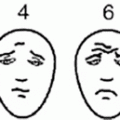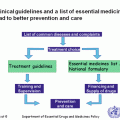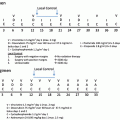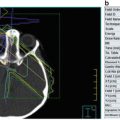Allogeneic donor type
Source
HLA matching and cell dose
Sibling
Peripheral blood
Match sibling donor: 6/6, 8/8 or 10/10
Mismatch sibling donor: over 8/10
Bone marrow
Haploidentical: less than 9/10 and over 10 × 106 CD34 cells/recipient weight in kg
Cord blood
Match sibling cord: 6/6 eventually 5/6
Cell dose equal or over 2.5 × 107 TNC/recipient kg
Relative
Peripheral blood
Match family donor:10/10
Mismatch family donor: over 8/10
Bone marrow
Haploidentical: less than 9/10 and over 10 × 106 CD34 cells/recipient weight in kg
Cord blood
Usually 6/6 eventually 5/6 cell dose not defined, suggested equal or over 3 × 107 TNC/recipient weight in kg
Unrelated
Peripheral blood
Match unrelated donor 10/10 or 12/12
Bone marrow
Cord blood
Match unrelated cord: 6/6 or 5/6 for oncological patients 6/6 for non-oncological patients and cell dose equal or over 3 × 107 TNC/recipient’s weight in kg
Mismatch unrelated cord: 4/6 for oncological patients, 5/6 for non-oncological patients and cell dose equal or over 5 × 107 TNC/recipient weight in kg
The available sources of HSCs are bone marrow, peripheral blood, and cord blood. HSCs from peripheral blood are used for all autologous transplants; they are collected through apheresis after receiving chemotherapy and granulocyte colony stimulating factor (G-CSF).
Bone marrow is the main source for allogeneic transplants in children. Peripheral blood might be utilized in some allogeneic procedures; in such cases donors are stimulated with G-CSF (10 μg/kg for 7–10 days). When an HI donor is used most of the time ex vivo graft manipulation is required such as rosetting or immune magnetic cell selection. Recently protocols without manipulation have been reported but this technique is still under investigation in adult trials and should be performed only by experienced teams [31].
Cord blood is safely collected at birth and does not require any treatment or special procedure to the donor. Collection, transportation, storage, and distribution of cord blood are very standardized procedures that need to fulfill many safety measures. Cord blood is a very attractive HSC source since banked units are readily available and less strict HLA matching is required [32]. Costs are a main issue for developing countries. There are great controversies worldwide on cord blood banking best policy; this is beyond the objective of this chapter [33–35]. We concur with the American Academy of Pediatrics and Netcord and we encourage public cord blood banking and directed donation and discourage banking for family or autologous use [36, 37].
There are differences in outcome between the different donor types, sources used, as well as the extent of HLA matching; see Table 27.2.
Table 27.2
Relative comparison between different types of donor regarding access and clinical outcomes
Donor | Speed of access | Relative cost | Risk to donor | Speed of engraftment | Graft failure | GvHD |
|---|---|---|---|---|---|---|
MSD | Immediate | Low | Low | Moderate | Low | Low |
MFaD | Immediate | Intermediate | Low | Moderate | Low | Moderate |
MUD | 3–4 months | High | Low | Moderate | Low | High |
UCB | 2–3 weeks | High | None | Slow | Moderate | Moderate |
Haplo | Immediate | Intermediate to high | Low | Fast | Moderate to high | High to low |
The main selection criterion for a transplant donor is HLA matching. Other criteria include blood group, CMV status, sex, weight difference, and transplantation urgency [38–41].
HSCT Indications
HSCT indication guidelines by international institutions, such as the European Group for Blood and Marrow Transplant (EBMT) [42] and the American Society for Blood and Marrow Transplantation [43, 44], are easily available and should be the base for local HSCT indications. Biological, economical and social issues, as well as health service conditions and outcomes differ widely from one country to the other so indications in a well-resourced country may not be sensible in a limited resource country. Isolated published case reports or clinical trials from well-resourced countries do not necessarily constitute standard indications for HSCT. At the beginning of an HSCT program, standard of care indication for HSCT should be performed mainly with autologous and related allogeneic grafts. Once standard of care HSCT is mastered, non-routine HSCT could be performed in a few instances, i.e., HI in children with Primary Immune Deficiency and UCB transplants in patients with very high-risk acute lymphoblastic leukemia (ALL) without a family donor. Worldwide populations are ethnically diverse and HLA differs widely; on the other hand cord blood banks and donor registries are located mainly in Western Europe and North America, that’s why population from countries with different ethnic background is not well represented in those registries. Only recently cord blood banks and donor registries are becoming available in other globe regions [45–50], but they face many difficulties [51] and most of them are not accredited [52]. At our program as in others, only 20 % of children have a suitable match sibling donor (MSD), and our population is not well represented in the registries and sometime we don’t find any donor even in the cord blood banks; using an HI donor and reduced-intensity conditioning (RIC) regimen for high-risk pediatric leukemia and non-oncological diseases, although difficult, has been proven feasible in limited resource settings [53].
We strongly recommend constituting an HSCT medical committee with representatives from the HSCT unit and the referring centers. Such a committee may review indications and should discuss all cases and establish patients’ priority taking into account only medical conditions.
HSCT is a very dynamic field and indications for the procedure are always changing; thus periodic review is mandatory. Our indications have been changing every 5 years approximately; as an example present indications for acute leukemias are summarized in Table 27.3.
Table 27.3
Hematopoietic stem cell transplant indication at the PINDA group
MSD | MFaD | CB MD | MMD | |
|---|---|---|---|---|
Acute lymphoblastic leukemia in first complete remission (ALL CR 1) | ||||
Hypodiploidy (≤44 chromosomes) | + | + | + | − |
PPR + Over 25 % blast in the BM by day 15 of treatment and/or MRD > 10 % | + | + | + | − |
PPR + T-ALL | + | + | + | − |
PPR + PRO-B ALL | + | + | + | − |
PPR + WBC ≥ 100,000/mL | + | + | + | − |
No remission by day 33 of induction therapy | + | + | + | + |
Acute lymphoblastic leukemia Ph (+) in first complete remission (ALL CR 1) | ||||
Any t(9;22) with MRD (+) according to | ||||
mrd(+) ≥ 0.05 % (at the end of procol IB/pre HR1) | + | + | + | + |
mrd(+) 0.005–0.05 % (at the end of protocol IB/pre HR1) any value of MRD post HR3 | + | + | + | + |
Infant acute lymphoblastic leukemia in first complete remission (ALL CR 1) | ||||
High-risk infant all at diagnosis, >6 months of age + MLL gene rearrangement + WBC ≥300,000 or PPR | + | + | + | − |
Intermediate-risk infant all at diagnosis (fails at least 1 high-risk criteria) and pre OCTADA(D) MRD ≥10−4 | + | + | + | − |
Acute lymphoblastic leukemia in second and third remission (ALL CR2 and CR3) | ||||
Any relapse for t(9;22) (+) ALL | + | + | + | + |
Very early BM or combined relapse, before 18 months of diagnosis (S4) | + | + | + | + |
Early or late BM relapse with T-immune phenotype (S4) | + | + | + | + |
Early or late combined relapse with T-immune phenotype (S4) | + | + | + | + |
Early BM relapse, non-T, between 18 years 30 months of the diagnosis or before 6 months of the end the treatment (S3) | + | + | + | + |
Late BM or combined relapse non-T-immune phenotype, after 30 months of the diagnosis, with no response after F2 (S2B) | + | + | + | − |
Early combined relapse, between 18 years 30 months of the diagnosis, non-T, with response after F2 (S2B) | + | + | + | − |
Late BM, non-T, with >10.000 blasts in PB (S2C) | + | + | + | − |
Bilateral isolated testes relapse, early or very early, before 30 months of the diagnosis (S2D) | + | + | + | − |
Early CNS relapse, T-immune phenotype, before 30 months of the diagnosis (S2D) | + | + | + | − |
Isolated CNS relapse, no T, before 18 months of the diagnosis, any age (S2D) | + | + | + | − |
Isolated CNS relapse, no T, before 30 months of the diagnosis (S2D) | + | + | + | − |
ALL in 3CR, only patients whose first relapse was at an extramedullary side | + | + | + | + |
Pre-transplant Evaluation
In order to perform a safe procedure, a comprehensive pre-transplant evaluation must be done in a systematic manner and include a proper patient clinical history, details of disease status, thorough physical examination of the recipient and donor, blood biochemical studies, baseline immune status, assessment of infection risk, and evaluation of social service, mental health, and dental services [54, 55]. Patients and donors might require special investigations according to risks of specific transplant procedures; see Table 27.4.
Table 27.4
Pre-transplant evaluation at the LCMH BMT
Auto | MSD/MFD | Haplo/CB | |
|---|---|---|---|
Organ function status | |||
CBC | x | x | x |
Coagulation tests | x | x | x |
Blood group (AB0 and Rh) | x | x | x |
Bone marrow smear | x | x | x |
Blood biochemistrya | x | x | x |
β-CGH | x | x | x |
Urine test | x | x | x |
Infection assessment | |||
Toxoplasma gondii (IgG) | x | x | x |
Toxocara canis (IgG) | x | x | x |
Tripanosoma cruzeii (IgG) | x | x | x |
Hepatitis A virus (IgM) | x | x | x |
CMV (IgG and IgM) | x | x | x |
VEB (IgG and IgM) | x | x | x |
Herpes simplex type I and II (IgG and IgM) | x | x | x |
Total antibodies hepatitis B virus
Stay updated, free articles. Join our Telegram channel
Full access? Get Clinical Tree
 Get Clinical Tree app for offline access
Get Clinical Tree app for offline access

| |||




